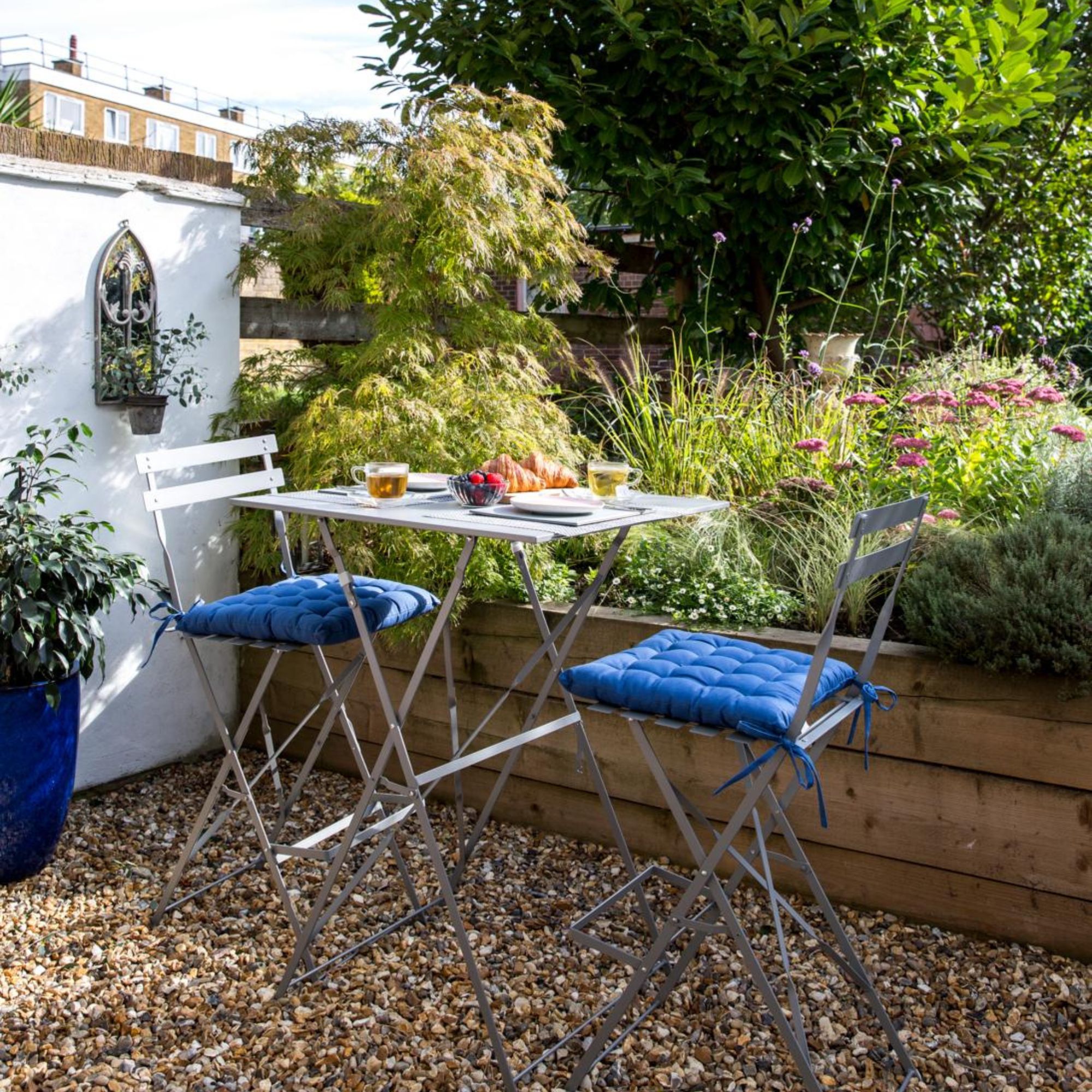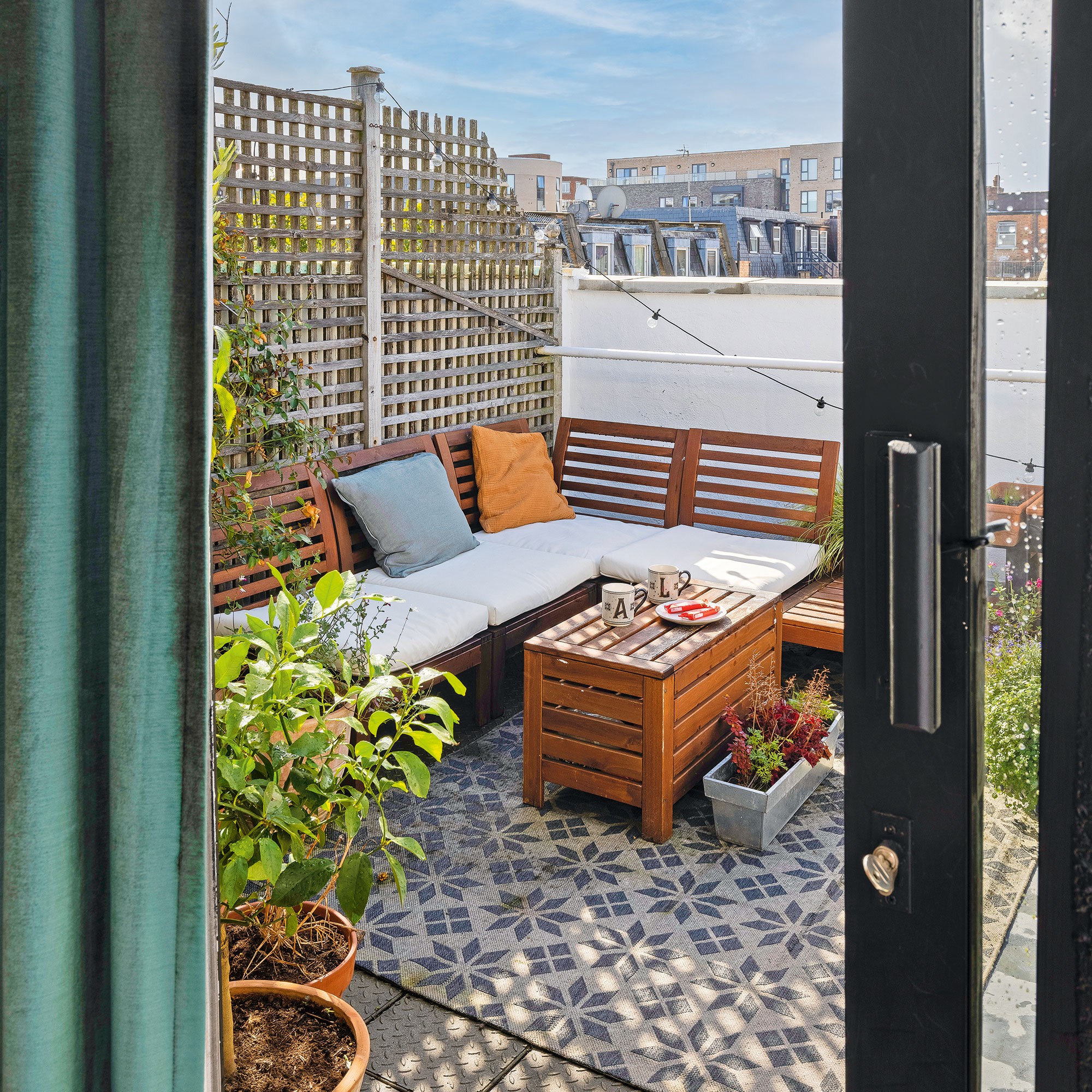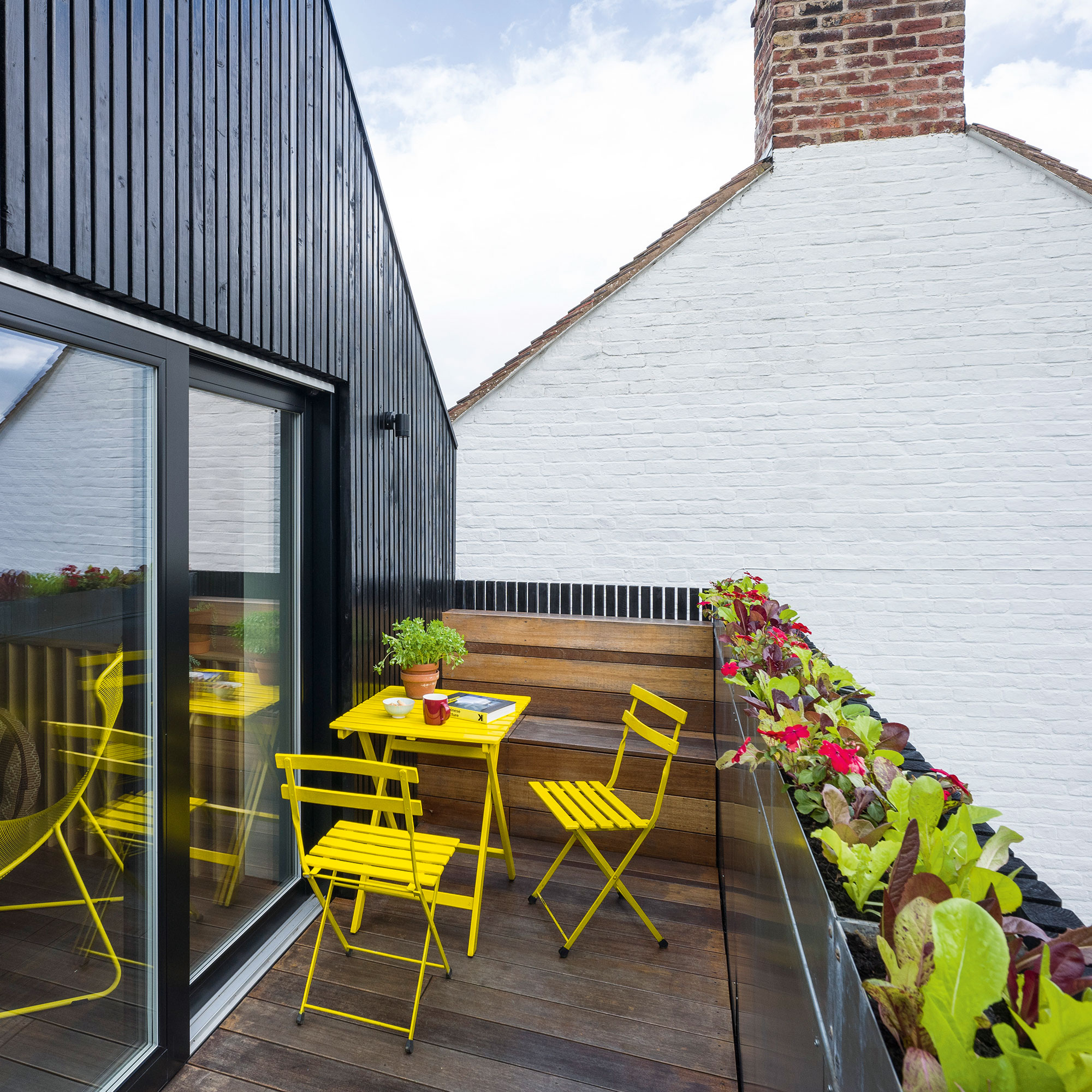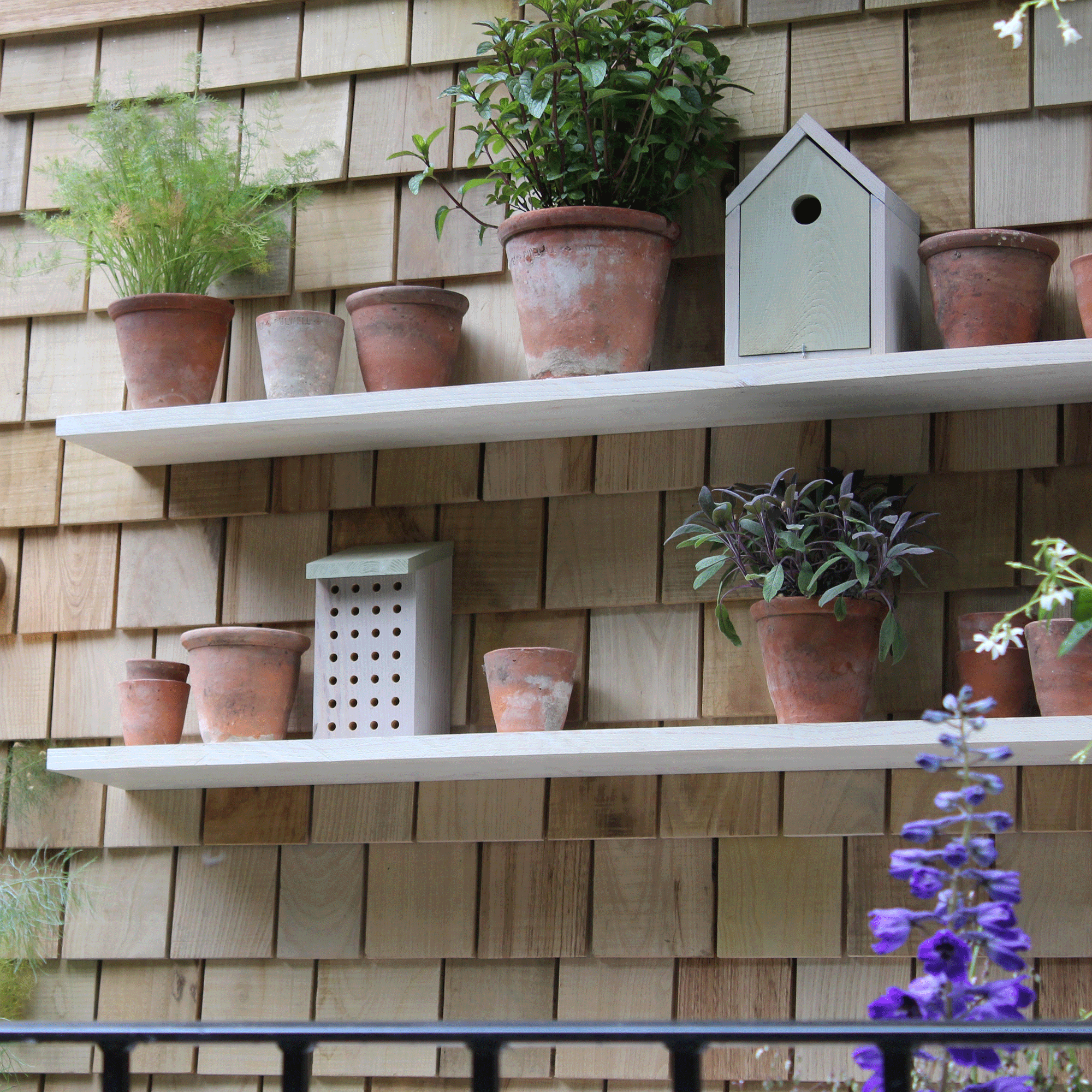How to start a balcony garden - 5 things to consider before adding plants to your balcony
Take the time to plan for the best results


Who says you need an actual garden to be a gardener? Sometimes, all you need is a little bit of outdoor space, and that can even come in the form of a balcony. But before you start buying plants, there are 5 things you need to know about how to start a balcony garden.
Whether you rent or own a flat, a balcony is the perfect opportunity for adding some small garden ideas . Invest in the best garden furniture for this small space and add in some potted plants and you have your own mini oasis in the sky.
But while you could go rogue and kickstart your balcony garden without a proper plan, you might come to regret it when your plants have died and your downstairs neighbours are complaining about the water dripping down onto their balcony. So, check out our guide on how to start a balcony garden instead.
How to start a balcony garden
‘Starting a balcony garden can seem daunting, but with a little bit of guidance, it can be easy enough to work out what you need,’ explains Steve Chilton, garden expert at LeisureBench. Below, we’ve explained 5 key steps you need to consider before getting started.

Steve is a passionate and knowledgeable garden expert with several years of experience within the field and has developed strong expertise for all things nature and plants. Steve is a keen educator and loves to share this knowledge with others. He strives to simplify complex garden practices and encourage eco-friendly gardening.
1. Assess the balcony

You don’t really have to worry about much when you’re planning container garden idea in an actual garden. After all, you can arrange pots in the garden however you like. However, you need to be careful when starting a balcony garden, as you may have to adhere to weight restrictions.
Steve explains, ‘It's important to think about the weight capacity of your balcony. All balconies will have different weight capacities, so you need to take this into consideration when you think about what types of pots you want to include in your balcony garden.’
‘For example, lots of heavy pots will quickly make up the overall weight, while using lighter pots will help keep the weight lower. Heavy pots include those made with ceramics, concrete and stone, while lighter pots are generally made with plastic.’
Sign up to our newsletter for style inspiration, real homes, project and garden advice and shopping know-how
‘Even if a pot doesn't feel too heavy, it's important to remember that you'll need to fill your pots up with soil and the actual plants, which will only add more weight.’
Because of this, it’s always a good idea to check the deeds to your flat or consult your landlord or maintenance company - especially if you also want to fill your balcony with other additions, like garden furniture or one of the best BBQs.
2. Consider the growing conditions
The opportunities are endless when it comes to starting a balcony garden. While you could dedicate this small outdoor space solely to flowers, you could also mix things up by growing a herb garden or growing your own fruits and vegetables.
However, you must consider the growing conditions on your balcony before buying any flowers or seeds. That’s because balconies have their own little micro-climates, often shielded from the sun by neighbouring balconies or exposed to stronger winds due to their height.
‘You need to think about sunlight, wind exposure and the different temperatures that your balcony will get,’ explains Steve. ‘It's important to only opt for plants that will be suitable to the growing conditions of your balcony.

‘For example, if your balcony is generally always shaded, then you shouldn't opt for plants that need to be in full sunlight. If your balcony is at a particular height, then wind might be a bigger factor in deciding on your plants. For example, you might want to opt for plants that can be supported with a stake, such as a bamboo stake.’
To get a general gist of your balcony’s growing conditions, it’s a good idea to understand which direction it faces (for example, a south-facing balcony will be much sunnier than a north-facing balcony) and take note of the temperature.
In fact, you could use something like this TickiT Indoor/Outdoor Thermometer from Amazon to monitor the temperature.
3. Think about the care requirements
Once you’ve considered the growing conditions of your balcony garden, you can then narrow down your plant selection. While doing this, though, you need to thoroughly research the care requirements of the plants.
‘Make sure that you can look after the plants you choose and that the plants' care requirement aligns with your gardening experience and maintenance abilities,’ explains Steve. The easier-to-care-for plants are best for first-time gardeners.’
This includes plants like succulents, jasmine, bamboo, hydrangeas, lavender, and bay trees. You could even go the extra mile and grow tomatoes in pots.

Kate Turner, Gardening Guru at Miracle-Gro adds, ‘Don’t forget, as everything is growing in containers you will need to be aware that they will need watering more often and feeding. In the growing season use a liquid plant feed once a week when you water and keep them thriving, not just surviving!’
Of course, you should always maintain a strict watering schedule for your plants, but this is also something you need to consider properly if you’re wondering how to start a balcony garden.
If you have a solid balcony floor without any neighbours below, you don’t need to worry. However, if you have a grated balcony floor and neighbours underneath, you need to be courteous and put saucers under your trays to allow for any overflow of water.
If you’d rather try a different method, you could use self-watering devices instead, like these AIMMIE Watering Globes from Amazon.
4. Start with a few plants
If you’re trying to give your balcony a makeover, you may feel inclined to buy as many plants as you can and fill the space up. Unfortunately, this is one of the biggest garden balcony mistakes you could make.
Instead, Steve would suggest starting slowly. He says, ‘To start, choose a few pots and a few plants to plant into them. Don't worry about the final finish of your balcony just yet, and don't worry if you think it's too sparse.’
‘Starting small and working your way up to more and more plants is the ideal plan, especially if you want to save money, care about the overall appearance of the balcony and don't want to overdo it.’
Taking your time also allows you to work with your space and focus on decorating your balcony as a whole. If your plan is to fill your balcony with garden furniture, think about vertical gardening and using wall-mounted pots instead.

5. Work within your budget
We get it; transforming any outside space can be expensive. But if you’re looking for a budget garden idea or you’re just looking to save a few pennies here and there, you should always work within a budget when planning a balcony garden.
Steve suggests, ‘Set a budget for your balcony garden and make sure to stick within it. This will help eliminate any money worries, and will allow you to build your garden at your own pace.’
It’s also a good idea to keep an eye on gardening deals to pick up balcony garden essentials for a fraction of the price.

FAQs
How do I turn my balcony into a garden?
The easiest way to turn your balcony into a garden is to add pots and planters. However, you should avoid filling the floor of your balcony with these pots, as this can make the space look messy and overcrowded.
Instead, focus your attention on the walls, the railings, and a little bit of the floor. By using the vertical space instead of the whole floor space, you can create a well-rounded outdoor garden that should be suitable for all kinds of plants and produce.
How do you maintain a balcony garden?
Maintaining a watering schedule is key when you have a balcony garden. As these pots and planters are often sheltered by balconies above, they may not see any rain at all. Therefore, it’s down to you to ensure that you’re watering them and giving them the attention they deserve.
It’s also a good idea to understand the growing requirements of the plants in your balcony garden. That’s because a balcony is its own little micro-climate, which means you need to take extra action to protect the plants from wind, extreme heat, or direct sunlight.
Now you know how to start a balcony garden, it’s time to start putting your plan into action!

Lauren Bradbury has been the Content Editor for the House Manual section since January 2025 but worked with the team as a freelancer for a year and a half before that. She graduated with a Bachelor’s degree in English and Creative Writing from the University of Chichester in 2016. Then, she dipped her toe into the world of content writing, primarily focusing on home content. After years of agency work, she decided to take the plunge and become a full-time freelancer for online publications, including Real Homes and Ideal Home, before taking on this permanent role. Now, she spends her days searching for the best decluttering and cleaning hacks and creating handy how-to guides for homeowners and renters alike, as well as testing vacuums as part of her role as the Ideal Home Certified Expert in Training on Vacuums, having spent over 110 hours testing different vacuum models to date!